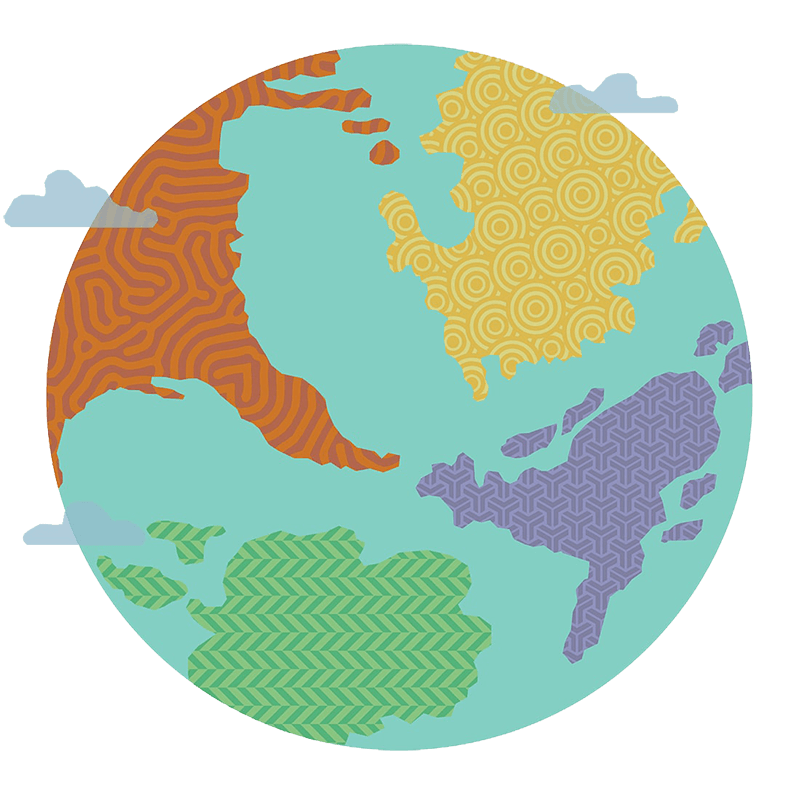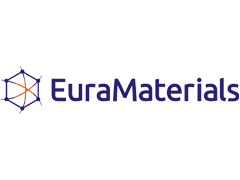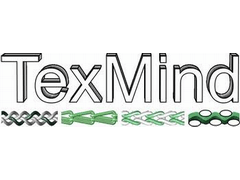THE 'PLANET' ONLINE LEARNING PLATFORM
The platform uses the metaphor of an imaginary planet to represent the journey students take to understand, experiment, define, develop and deliver solutions for a design project. The planet platform includes 4 fictitious Continents. Each of these continents represent the 4 phases of the Design Thinking methodology (i.e., ‘Discover’, ‘Define’, ‘Develop’, ‘Deliver’) of the ‘Double Diamond’ model developed by the British Design Council.
Student teams are invited to engage in a co-creative process through the semantics of Continents (phases), Countries (concepts), and Cities (tools) on an e-learning environment (Fig. 1).
Each Continent (phases) includes:
- Countries that represent concepts, which educators want students to learn (e.g., empathy, sustainability, entrepreneurship), and
- Cities that represent practical tools students use in order to learn those concepts (e.g., ‘day in the life’ or online games).
The learning process is based on the principle of game-based learning and constructionism. Constructionist learning theory holds that learning can happen most effectively when people are active participants in making tangible objects. In this sense, constructionism is also connected with experiential learning and learning-by-doing. Game-based learning can be regarded as a useful way to let students experience things first-hand and learning-by-playing.

A key resource for the planet platform is an original open-source, authoring system for the creation of digital games called 'Choices with Consequences' or ‘ChoiCo’ games. These games are based on the idea of an avatar navigating amongst the diverse consequences of making choices in situations characterized by complex socio-scientific issues. For example, the demo game ‘Sustainable Textiles’ deals with the issue of making sustainable choices in smart-textile engineering.
Educators and students can play:
- existing ‘expert’ games, or/and
- new didactically ‘engineered’ games as a variation of an ‘expert’ game by changing specific parameters, and/or
- ‘half-baked’ games (i.e., games with intentional “bugs” to its original content and rules), aiming to challenge the players to modify or to extend it. While learners question, modify and improve a 'half-baked' game, they express and construct new knowledge about the game's underlying concept (e.g., empathy, entrepreneurship, etc).
Other than the different types of Choico games, students get to practice on mainstream design tools (e.g., ‘Day in the Life’, matrices, charts, SWOT) that are typically used in the design process, as well as, a number of MOOCs or other IT tools as a means of mastering the Design Thinking methodology.
DEVELOPMENT OF THE PLATFORM
In the three-year plan of the T-Crepe project, two major steps are defined:
In the first step, relevant tools and games for the planet platform are co-developed by the T-Crepe academic and industrial partners. At the end of the first year of the project, we envision a pilot testing in the educational contexts of our T-Crepe academic partners, that is Ghent University (Belgium), Lappeenranta-Lahti University of Technology (LUT, Finland), University of West Attica (UNIWA, Greece) and National and Kapodistrian University of Athens (NKUA, Greece).The aim is to test the platform in an educational context and through the feedback to develop further the platform and open it up for the broader public/stakeholders.
In the second step (during the second year), the refined platform and the involvement of interested academic and industry affiliations from around the world, is launched. The aim is to make the platform multi-disciplinary and transfer-proof, that is, to allow exchange and transferability of knowledge generation and outcomes to a broad range of disciplines (beyond textile design engineering).
YOUR BENEFIT AS AN EDUCATOR
The platform is originally designed to support instructors/educators from the (textile) design engineering domain and beyond in the implementation of online learning activities utilising the idea of gameplay.
If you are interested in having your students explore creative tools that can potentially save coaching time, improve coaching effectiveness and efficiency, and enable a commercial exploitation (by making students’ projects visible and shareable widely and available to the corporate sector), then we would like to hear from you.
By participating in the T-Crepe project, you will have the opportunity to:
- Strengthen your (online) teaching by using a student-centred innovative e-learning platform
- Learn about innovative educational tools with which you can co-develop online resources (games) for your students
- Exchange interdisciplinary knowledge with other academics and industry partners
- Develop a local and international network, leading to new collaborations for you and your students
- Become agent of change in your community.
In practical terms, you will be able to:
- Make use of existing online games for your students to explore the Design Thinking methodology
- Co-develop your own games for your students to play and learn specific concepts for your course
- Tailor your course projects / concepts and make them into online games with the T-Crepe team’s help
- Provide your students with tools to create or modify online games
- Foster independent, collective and self-regulated learning with minimal personal or one-to-one coaching
- Use the platform as a tool for evaluating students’ progress
- Make your teaching/coaching more enjoyable and effective.
Your students will get involved in:
- Getting familiar with / mastering the phases of the Design Thinking methodology (from understanding the project and user to developing rapid prototyping skills and preparing for product delivery)
- Becoming more independent, entrepreneurial and stimulated to venture
- Acquiring 21st century, future-proof skills and competences for Industry 4.0
- Networking with diverse stakeholders and increase employability.
How to get involved
About T-Crepe afterlife
The heritage of a successful project lives on and has an impact long after the project has ended.
-
EDUCATION
The project has created concrete results that have been and can continue to be used, such as Planet Platform with all the educational games, altogether 102, created on it. During the project, 15 courses have used Planet platform, and they can continue to use it after the project.
-
RESEARCH
Research has also been carried out and published during the project, the results of which will provide the basis for further new science and understanding. 10 conference presentations have been published on T-Crepe, and at least one journal article is in preparation.
-
NETWORKING
In addition to co-created results, the very existence of the project has produced things that are also important results, such as networking, project reports and media publications. All of these will continue to exist after the end of the project, and they can also be used after the project.
-
NOVEL IDEAS
T-Crepe project can also enable things that do not exist yet, but will only emerge and grow after this project. This may include, for example, new co-creation actions by the network created during the project, or novel ideas sparkled from the T-Crepe results.









